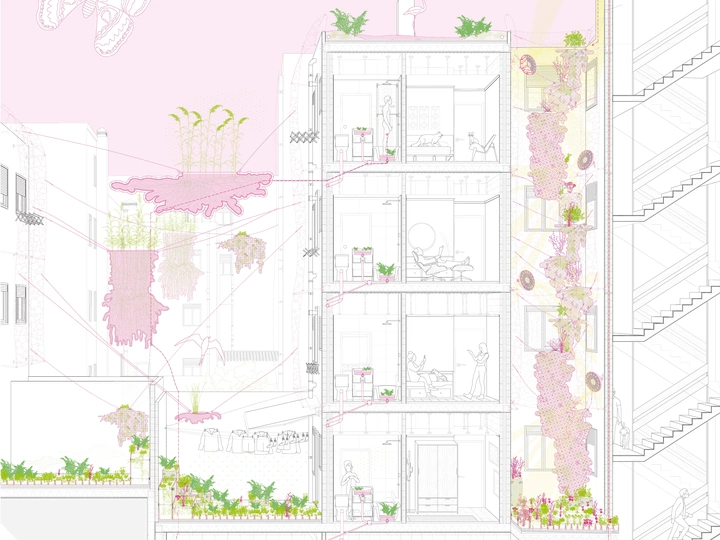"Más allá de El Altet" (More-than-El Altet)

Hi, hi, hi!!!! I’m an architect recently graduated from the University of Alicante (2016-2022). Interested in history, philosophy and plastic arts, studying Architecture in Alicante opened and enhanced my curiosity about the future. As a consequence of this education and with a lot things to learn, what motivates me most at the moment are theoretical thoughts about ecology, sociology and feminism, about the future; the design of safe and much fairer spaces, as well as the implementation of imaginative designs capable of making us reflect on our way of existing.
One of the things I value most from my training is the possibility that not everything is what it seems, the ability to question what we have always believed. That is why, today, I am interested in understanding that our profession goes far beyond a simple material work. I am curious to know what it means to relate to each other, which consequences derive from our actions, how we can design real spaces in accordance with all the ways of life they inhabit.
This interest has led me to take part in a wide variety of projects. I have been in studios that mix practice with theory and participation in exhibitions: CAMPO Arquitectura (Lisbon) and MAGICARCH Architecture Office (Murcia), being awarded a couple of the works I made during my stay there by the FAD awards and by the YEA! Young European Architects for the 17th Venice Biennale of Architecture. In addition to others which develop a more classical architecture. Moreover, I am part of BKN Architecture, an association that works on social projects that use urban planning as a basis for the defence of social rights, equal opportunities and ecology. Besides, I have been teaching at the University of Alicante during the second semester of the academic year 2021-2022, as a collaborating student of Antonio Abellán's class. Nowadays I am located in SingularGreen, a company focused on integrating architecture and vegetation.
Situated in an old rural area where plant species and many non-human animals once lived, we find the urban space where I live, El Altet. This place serves me as an example of the most common ways of living in today's society, a human form that closes itself to its environment and to what once inhabited the territory that is now squatted by anthropocentric force. What have become of these plants, these animals, these atmospheric agencies that have been displaced? How are we able to continue ignoring them despite the ecosystemic force they have in our environment? Our ignorance has meant a total closure to an environment to learn from, our ego is to blame for many of today's environmental ills. That is why I start this project with a process of getting to know all those fellow species that I have ignored all my life. A process of plant identification carried out with the help of my grandmother and my mother, two women from the countryside with a high botanical knowledge. This is how I am able to identify which species other than humans live with me.
The research focused on the plant world as an example of an ignored and underestimated world that is, complementing it with the identification of the non-human animals that also coexist with some of these species to make a realistic and concidius design. In addition to this identification, extensive investigation of the needs of plants and how they grow freely in order to reproduce the ecosystem in where they live as closely as possible in the urban environment. Finally, I proceed to use design as an interspecies mediator. Creating a direct dependence between the human being and the ecosystem by a constructed wetland that imitates John Todd's ecomachines. In addition, by redesigning the traditional "kokedamas", I try to reproduce the natural environment of the species studied, allowing the connection between the roots of the different plants that generate a communicative network between them.